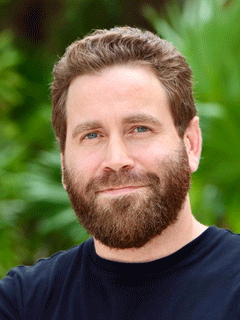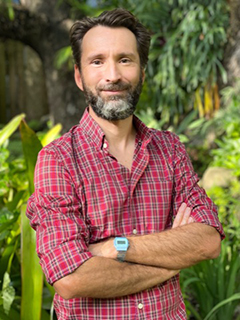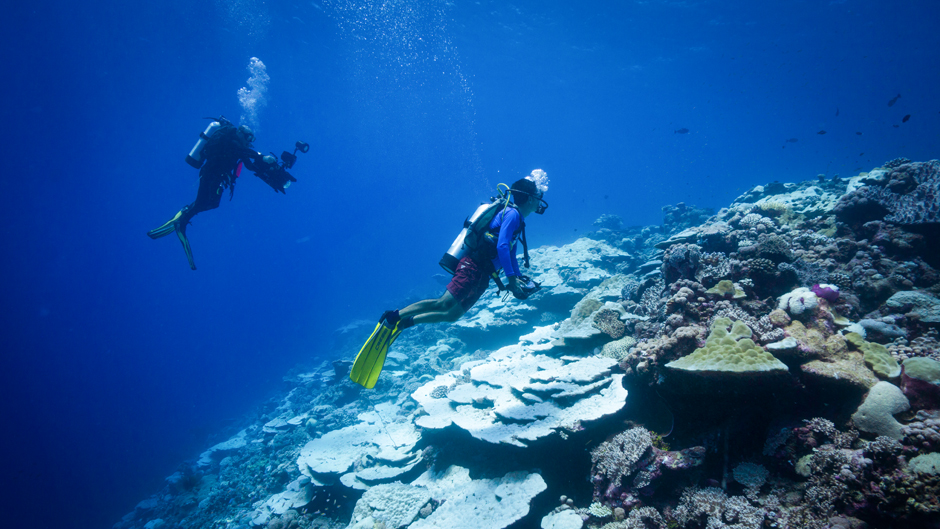In a small basement room inside Cox Science Center, a team of students and faculty members spend hours each week sifting through vials of what looks like sand.
But they actually are searching through the sand for the remains of foraminifera, also known as forams, which are single-celled organisms that live in tiny shells called “tests.” When forams die, their unique tests are left behind on the seabed, and the research team is studying these shells to learn about the history and health of coral reefs.
With 2,500 samples collected from reefs across the globe, the work is slow and meticulous. Yet, the researchers understand the weight of their efforts. As coral reefs struggle to survive in rapidly changing oceans, these minuscule forams may serve as clues to the viability of reefs worldwide. They also could help scientists determine which reefs may be more receptive to restoration efforts in the struggle to save these fragile ocean ecosystems.

“By studying coral reefs through the lens of these forams, we are attempting to distinguish reefs that are naturally unhealthy—and have been for a long time—from those that were healthy prior to the impacts of humans,” said Alex Humphreys, senior lecturer of marine geosciences at the Rosenstiel School of Marine, Atmospheric, and Earth Science and co-investigator of the Protist Prophets study. “Reefs that were healthy before human impacts are much more likely to respond to conservation efforts.”
While most reef research focuses on the past 50 years, by using forams, the team can estimate the health of reefs dating back much farther, said Sam Purkis, lead investigator on the project, as well as professor and chair of the Department of Marine Geosciences at the Rosenstiel School. In 2020, Purkis and Humphreys secured a grant from the National Science Foundation to study forams as a bioindicator of the health of coral reefs. The study is expected to run through 2024; and ultimately, they hope to create a comprehensive global database of tropical ocean forams that could be useful for marine conservation efforts.
“Forams have been abundant in the ocean for the last 500 million years, and their limestone shells record many things about the chemistry of the ocean,” said Purkis, who collected many of the samples himself during a 10-year Global Reef Expedition he participated in with the Khaled bin Sultan Living Oceans Foundation. “We are using forams to tell us whether the reefs have suffered high temperatures over the centuries, how the reefs have been stressed or impacted by humans, and also how reefs have been overgrown by algae.”
To do this, undergraduate marine science students help Humphreys and postdoctoral scientist, Akos Kalman, to identify the type of forams at each location where they were collected. It’s no easy feat.
Using a small brush and microscope, students must pick out 200 individual foram tests from each sediment sample, separating them from grains of sand. After isolating the forams, team members glue the tests onto special microscope slides. Next, Humphreys and Kalman, with assistance from Riley Ames and Zachary Adams—two dedicated undergraduate research assistants—comb through guidebooks and reference papers that correspond to the location where each sample was collected. They correlate each test to its corresponding genus.
This data, as well as details about the quality of each test, is then entered into an ever-growing database. And by comparing this foram data with various environmental influences on each reef, researchers will be able to understand more about the health of the coral reefs where the forams lived.

Purkis
While some global reefs have transitioned to algae-dominant ecosystems, others have persisted. And the research team is trying to understand why some reefs recover, while others disappear, Humphreys added.
Still, it can take as much as two days to fill a slide with 200 forams.
That’s why Humphreys and Purkis always are looking for dedicated and enthusiastic students to join the project. Ames, a second-year oceanography and marine biology major, started working on forams in 2022 and now spends 12 to 16 hours a week in the lab. Junior Khrista Nicholas spends about 10 hours in the lab each week.
“I think everyone wants to work on a really important project that has great implications to improve conservation efforts for coral reefs,” said Nicholas, a marine science and biology major, who has become very prolific at spotting forams. “Also, when I am in the lab, I can be a part of that microscopic world for a while.”
Ambar Condori-Boughton, a first-year marine science and biology major, once dreamed about forams after spending hours in the lab staring into the microscope.
“It’s a cool opportunity to be in a lab, and just in the first few weeks I learned so many skills—like sorting, gluing, and identifying forams,” she said. “But it’s also a fun group of people and an interesting topic that I wanted to learn more about.”

